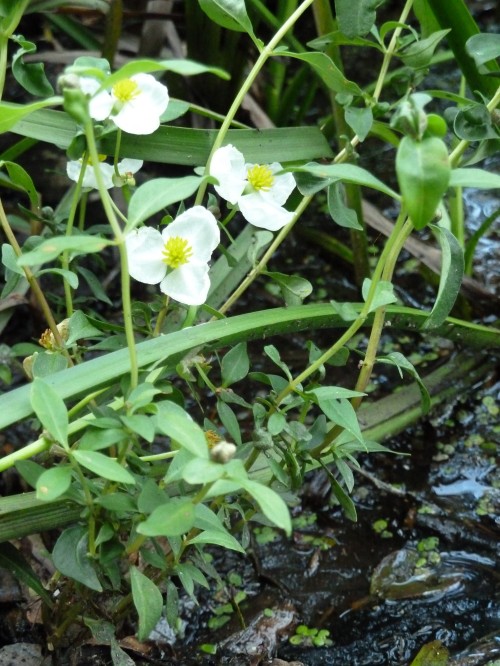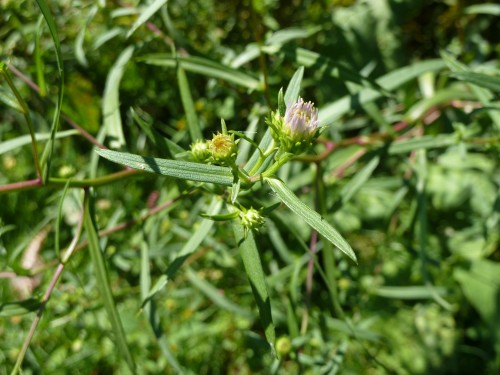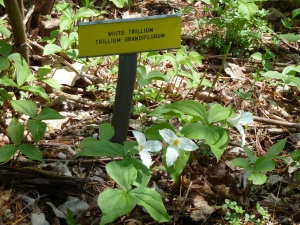This pretty spring flower has sprouted in the last couple of weeks here in Massachusetts. I very much like this plant, as it’s a pretty ground cover and when you get up close, the flowers have a lot more to them than you can tell from afar. For one, the petals are asymmetric and create a sort of pinwheel. Also, it’s not entirely blue, but has a white ring in the middle, that looks so inviting for someone/something to enter!
Periwinkle has elliptic leaves, opposite, short-stalked and almost leathery. The petals are joined.
Originally from Southern Europe, this is a common alien plant in the U.S. and even has acquired an American name, Myrtle. I looked it up in some other languages as well – in Swedish they call it Vintergröna, which means “winter green”. This is interesting because we call wintergreen another plant that is also a dense green ground cover but with white flowers (and the leaves taste like wintergreen flavor from toothpaste!). But the name rings true, because this plant does stay green in the winter.
I wonder where the name “periwinkle” comes from? I looked it up in the dictionary and there were two entries. The first entry describes the plant and says the origin is late Old English, peruince, from late Latin pervinca, reinforced in Middle English by Anglo-Norman French pervenke. The v and the w were changed and a -le was added, and now we have the word “periwinkle”. The 2nd entry describes the freshwater snail that goes by the same name.
Although in the dogbane family, which is known for being the bane of dogs (poisonous to dogs, and others), this plant isn’t as poisonous as its relatives. It contains many alkaloids which may have medicinal purposes.



























